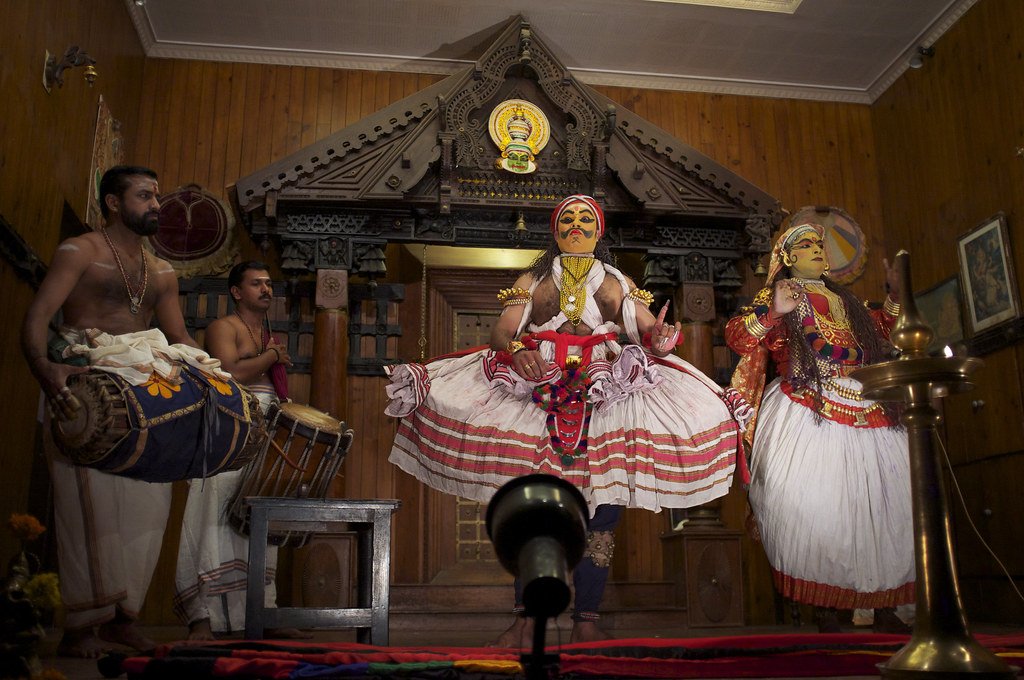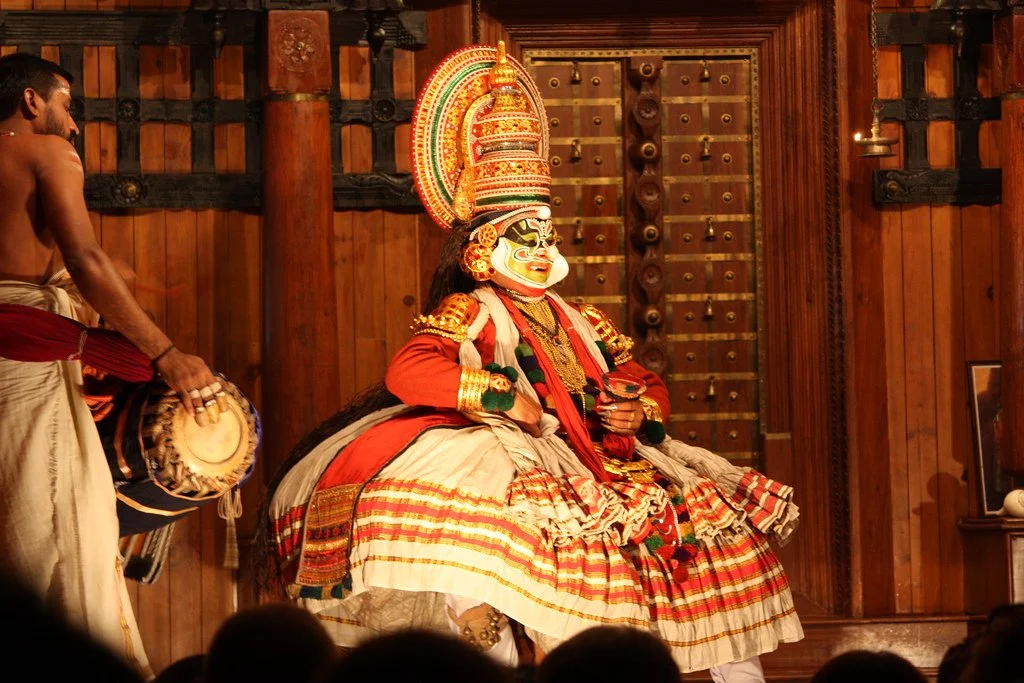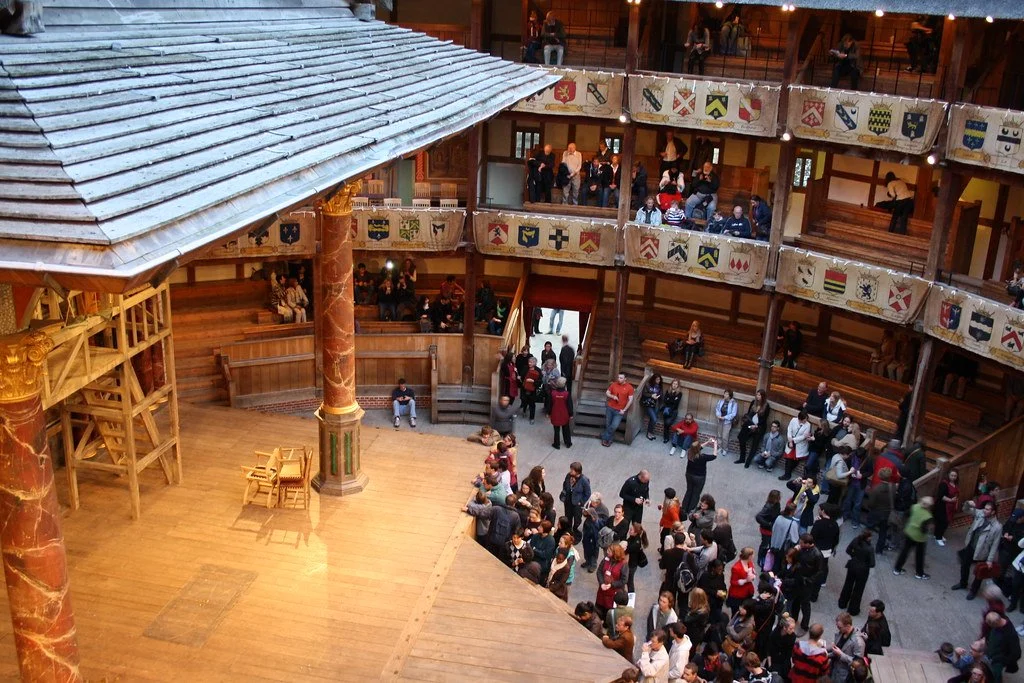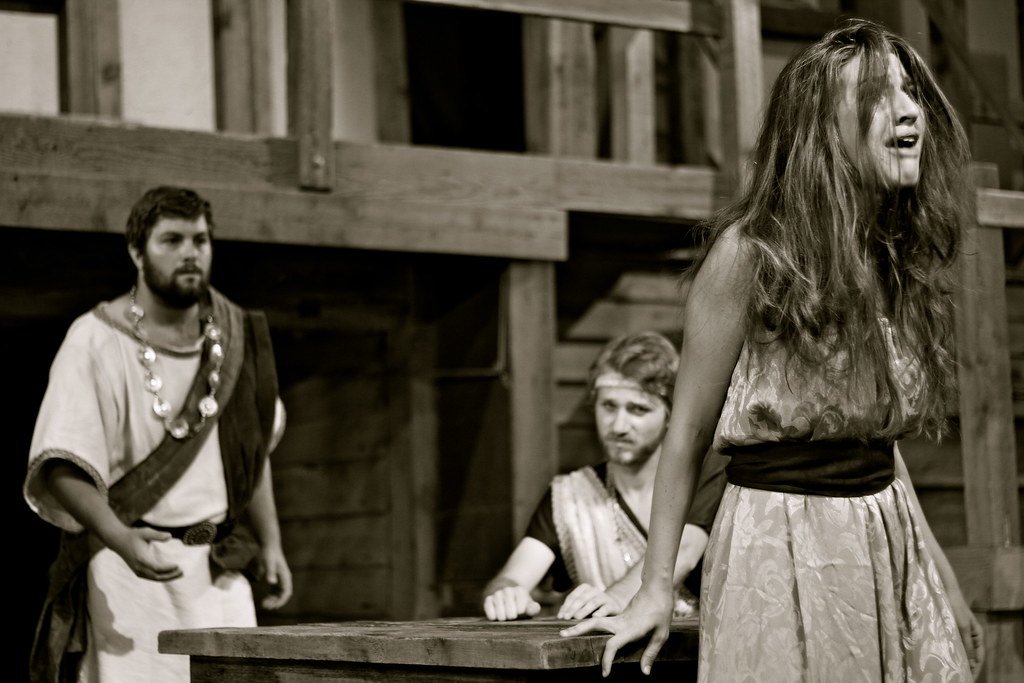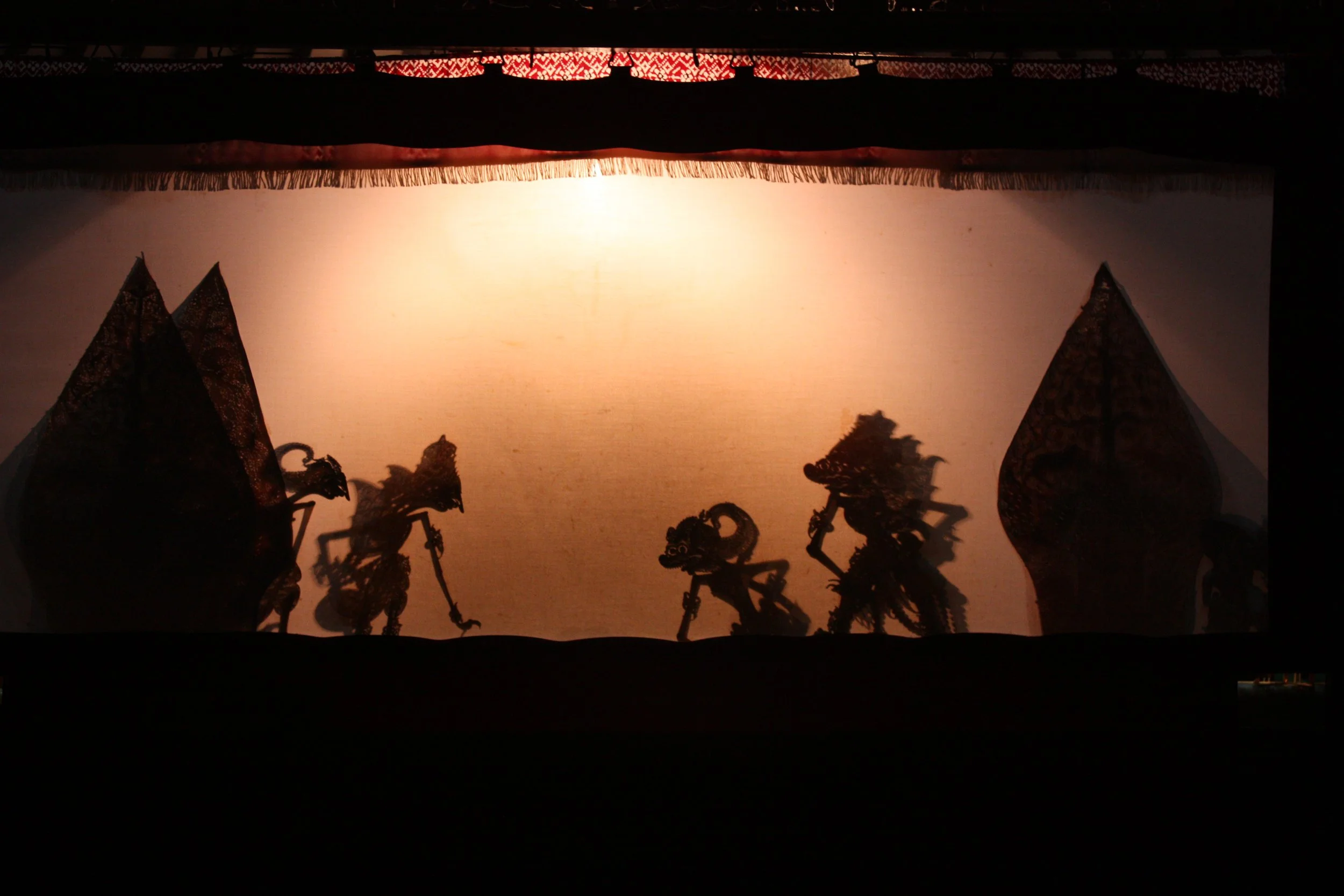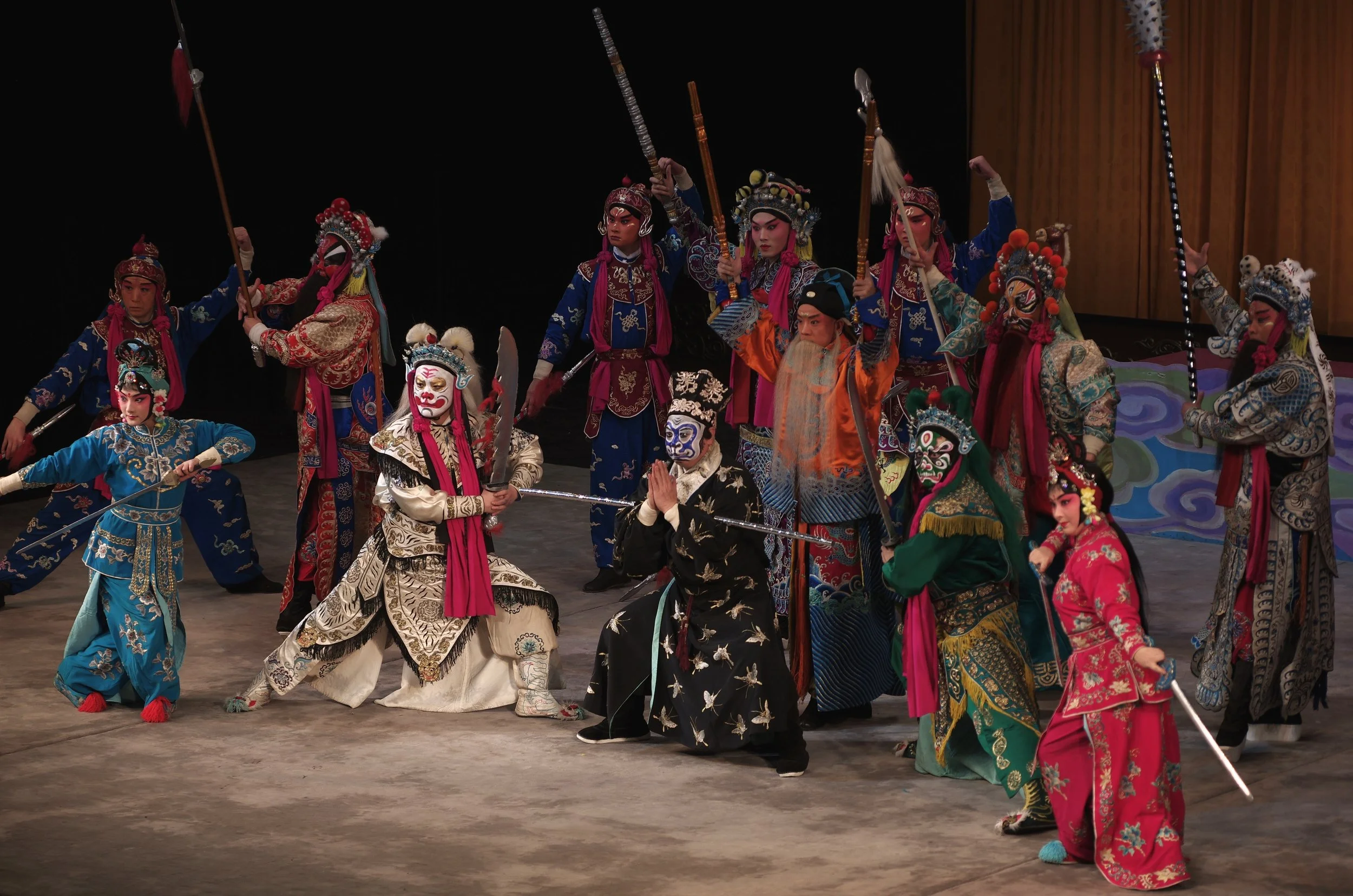From Elizabethan Theatre to Peking Opera, these are 7 diverse storytelling formats that create awe-inspiring fusion of entertainment and ritual.
Peking Opera, the Legend of the White Snake. JS Dust. CC BY 2.0.
Theater stands out as an extraordinary art form that embodies the vibrant cultures spanning the globe. It not only boasts the distinction of being the oldest form of artistic expression but also captivates audiences by showcasing the essence of life and tradition. In the days preceding the advent of television and the internet, theater reigned supreme as a source of entertainment, and every aspect of it, from costumes to stage design, holds immense cultural significance. Whether we delve into the realms of renowned Greek and Shakespearean theater or venture into the lesser-known stages of India's Kathakali and Indonesia's Wayang Kulit, each theatrical masterpiece offers a profound and memorable experience.
1. Noh Theatre—Japan
Classical Japanese musical performance of Noh theater at the festival.Jim Epler. CC BY 2.0.
When exploring Japanese stage art, one’s imagination is often filled with vivid images of menacing masks, ritualistic movements, and enigmatic dialogues. Yet, these elements merely scratch the surface of Japanese performing art. Among them were the two prominent forms, Noh and Kabuki. The very term “Noh”, derived from the Japanese language, embodies the essence of “talent” and “skill.” Emerging as one of Japan’s oldest performing arts, Noh’s formalization took shape in the late 14th century, with roots in the traditional Kagura dances, a reverent homage to the gods for bountiful harvests. In stark contrast to Western theater, Noh does not have explicit plotlines, offering an abstract emotional experience. A single overpowering emotion such as jealousy, rage, or sorrow dominates the central character, portrayed through highly stylized performances. Symbolistic aesthetics play a crucial role, with distinct masks representing various character archetypes—Gods, Warriors, Women, the Deranged, and Demons. Noh explores themes of love, loss, aging, and the supernatural. UNESCO acknowledged Noh as a valuable intangible cultural heritage in 2001, solidifying its significance.
While many Noh plays are lost in history, nowadays, there are still around 200 captivating pieces that continue to enthrall audiences. Among them, “Atsumori” as a classic. This poignant tale unveils the tragic fate of Taira no Atsumori, a young warrior slain by Kumagai no Jiro Naozane during the Genpei War. As Kumagai, now a monk, revisits the battlefield, he encounters Atsumori's ghost. The story of Atsumori's demise is retold by a villager, leading to a confrontation where Atsumori realizes the absence of true enemies. Derived from the renowned “Tales of Heike,” depicting the intense struggles between the Taira and Minamoto clans, “Atsumori '' captivates Noh audiences.
2. Kathakali—India
Kathakali performance.Aleksandr Zykov. CC BY-SA 2.0.
India’s vibrant Kathakali theater enchants the senses with its dazzling array of colors, intricate costumes, and captivating dance performances. Born on the shores of Kerala over 300 years ago, Kathakali weaves together elements of dance, dramatic storytelling, and mythological traditions. Drawing inspiration from the intricate temple sculptures of the 16th century, the dance sequences in Kathakali often portray the distinct square and rectangular positions characteristic of that art form. The very term “Kathakali” signifies the art of storytelling through dance drama, and the narratives themselves have been passed down through generations via oral tradition. These tales are often related to deities, demons, and other mysterious characters.
Kathakali performance.Aleksandr Zykov. CC BY-SA 2.0.
To bring epic stories to life on stage, Kathakali performances are typically held outdoors on a bare stage, accompanied by seasoned musicians. The heartbeat of a Kathakali production lies in the rhythmic pulse of percussion instruments like the Chenda and the Maddalam, setting the stage for the unfolding drama. As the melodies intertwine with the beats, the actors, adorned in elaborate makeup, step into their roles — a process that takes several hours to complete. The distinctive makeup style enables the performers to communicate a range of emotions through codified facial expressions, meticulously synchronized with the sung verses known as “padams.” The music serves as the lifeblood, infusing each movement and gesture with depth and meaning.
One of the most beloved tales performed in Kathakali is “Nala Charitam,” derived from the Mahabharata. This epic story spans four nights, narrating the journey of King Nalan and his beloved Damayanthi. Advised by Sage Naradan, they face plots from Goddess Kali, leading to separation. However, a hunter rescues Damayanthi, while Nalan finds solace in Kosalam. With the assistance of Kesini, they reunite, reconcile misunderstandings, and rediscover happiness.
3. Greek Tragedy—Greece
Ancient Greek theater in Delos. Bernard Gagnon. CC BY-SA 3.0.
Greek tragedy, one of the world’s most renowned ancient performance arts, finds its origins in the sacred rituals of Dionysus, the god of pleasure, fertility, wine-making, ecstasy, and theater. Spanning from the late 6th century BCE, Greek tragedies delved into the tragic downfall of heroes due to their inherent flaws, incorporating a mix of spoken and sung narration along with divine interventions. Accompanied by the Greek chorus, the dramatic actors engaged in dialogue, typically in iambic tetrameters, a poetic meter consisting of three iambic units (unstressed-stressed syllable pairs) per line. This rhythmic structure infused the lines with a sense of cadence and harmony. The theater was accessible to the public, as the cost was kept low through subsidies provided by the polis, or city-state. Performances took place outdoors, featuring a chorus and three actors who portrayed all the roles. These plays were often staged in competitive settings, allowing the audience to vote for their favorite, reflecting the preferences and tastes of both the Greek elite and ordinary citizens.
Renowned playwrights Aeschylus, Sophocles, and Euripides have left an enduring legacy with their masterpieces of Greek tragedy. One such opus is Sophocles’ “Oedipus Rex,” also known as “Oedipus the King.” This play, believed to have been performed between 430 and 426 BCE, stands as a pinnacle of achievement in classical Greek drama.The story revolves around the haunting concept of fate’s inevitability. Oedipus, the central character, finds himself bound by a prophecy that foretells his patricide and an incestuous union with his mother. Compelled by the prophecy, Oedipus is forced to abandon his home of Corinth, and unwittingly journey to Thebes. However, this pursuit comes with great suffering, as Oedipus inevitably faces hardship as a result. “Oedipus Rex” examines profound themes of fate and truth, captivating audiences with its exploration of human nature, forcing them to contemplate their inexorable destinies.
4. Elizabethan Theater—United Kingdom
Inside Shakespeare's Globe Theatre. Andrew_j_w.CC BY-SA 2.0.
When discussing theater, the name that immediately springs to mind is none other than William Shakespeare. However, it was the vibrant cultural landscape of Elizabethan theater that set the stage for Shakespeare’s glorious triumphs. One of the most significant accomplishments of this era was the establishment of professional acting groups, which mirrored the structure of modern-day theater and captivated audiences with their mesmerizing performances.
Scene from Winedale Shakespeare Festival.Ajleon. CC BY 2.0.
Shakespeare, undoubtedly the shining star of Elizabethan theater, embarked on his theatrical journey at an open-air playhouse in Shoreditch. It was a time when public playhouses were just beginning to emerge in the then-bustling London. Not only was Shakespeare an exceptional playwright, but he also graced the stage as a talented actor. He joined a renowned theater company and remained loyal to them throughout his illustrious career. During his remarkable tenure at The Globe Theatre, an iconic London venue where Shakespeare’s King’s Men theater company took center stage starting in 1599, debuting an extraordinary collection of over 30 plays that continue to hold a prominent place in world literature. Among his unparalleled creations are timeless tragedies like “Hamlet” and “Macbeth,” which have endured the test of time, captivating audiences with their profound exploration of human nature and themes of suffering, equivocation and remorse.
“The Tempest” embodies the essence of Shakespearean plays, blending tragedy, comedy and the transformative power of art to reflect the complexities of human existence within the grand collection of Elizabethan theater. The sorcerer Prospero, a master of illusion and manipulation, orchestrates a captivating tale of shipwrecks, revenge, and redemption on a mystical island. Amidst this magical turmoil, love blossoms, treachery unfurls, and forgiveness emerges triumphant. The play’s allure lies in its openness to diverse interpretations: is it an allegory of Shakespeare's farewell to the stage, or a reflection on European colonization of foreign lands?
5. Tango Theater—Argentina
Tango show in Buenos Aires. Audrey_sel. CC BY-SA 2.0.
Coming into its own in the late 19th century, Tango has its roots in the vibrant neighborhoods of La Boca in Buenos Aires and Montevideo, where a blend of European, African, and Argentine influences converged. This fusion of diverse cultures gave birth to a unique dance that tells stories of passion, longing, and resilience. In the heart of Buenos Aires, the Tango is more than just a dance; it is an art form that embodies the spirit of the city. From its early roots in small ensembles, such as the tango sextet, with piano, double bass, violins, to the larger tango orchestras, or guitars, drums, vocalists, and tango dancers, the Tango Theatre presents a diverse range of musical expressions. Here, the Tango comes alive, showcasing its elegance, sensuality, and emotional depth.
Tango’s journey is a testament to its enduring allure. Initially shunned by mainstream Argentine society as indecent, it found unexpected recognition and adoration in the upper-class circles of Paris, thanks to Argentine intellectuals who introduced it abroad. From there, the Tango quickly swept across Europe and the Americas. As it returned to its homeland, it evolved and transformed, reflecting the changing times and influences it encountered. Famous tango theaters, such as La Ventana in San Telmo, distinguishes itself from the rest by showcasing not only tango but also a rich array of folkloric music. This captivating show offers a well-rounded experience, featuring music and dance from various regions of the country. Many Tango folk styles, from the lively rhythms of chamame to the vibrant melodies of chacarera and Zamba, come from provinces like Salta and Santiago del Estero in the northern interior.
6. Wayang Kulit—Indonesia
Wayang kulit from Indonesien performed at Paris.Dalbera.CC BY 2.0.
In Indonesia, master puppeteers captivate audiences with mesmerizing stories in performances of Wayang Kulit, or shadow puppetry. Meticulously crafted from buffalo hide, the puppets boasted intricate designs that brought characters to life. Traditional oil lamps gave way to modern lighting, illuminating the stage and infusing the ancient spectacle with new magic. Inspired by Hindu epics, Ramayana and Mahabharata, the performances transported spectators to mythological times. Wayang Kulit gave birth to other art forms, including three-dimensional puppets and wooden figures manipulated by rods. Through witty actions, puppeteers conveyed social and political criticisms, creating a legacy of cultural significance. Passed down through generations, Wayang Kulit wove together indigenous myths, Indian epics, and Persian heroes, forming a rich tapestry of folklore and tradition.
Yogyakarta, Wayang Kulit. Arian Zwegers. CC BY 2.0.
The ancient Ramayana takes center stage in the Wayang Kulit tradition. In a distant land, Prince Rama and the beautiful Princess Sita find themselves exiled to the depths of the forest. Amid the wilderness, an evil and cunning demon king named Ravana set his wicked eyes upon the exquisite Sita, devising a sinister plan to possess her. Upon discovering Sita's abduction, Rama's heartache turned into fierce determination. With unwavering courage, he embarked on a perilous journey to rescue his beloved princess. This epic battle between good and evil has become a timeless legend, celebrated through the artistry of Wayang Kulit, captivating audiences with its riveting storylines and masterful puppetry.
7. Peking Opera—China
Havoc in Heaven Peking Opera. Chenwen. CC BY 2.5.
China boasts a diverse array of over 300 opera types, and among the most celebrated is Peking Opera. Regarded as the pinnacle of Chinese art, Peking Opera has a remarkable history spanning 160 years. This captivating art form combines singing, acting, recitation, and martial arts to bring stories of history, society, and everyday life to the stage. The music of Peking Opera sets the rhythm and atmosphere, while the elaborate costumes and symbolic makeup vividly depict the personalities of the characters. Peking Opera is an art that is carefully passed down through generations via master-student training, ensuring the preservation of China's cultural heritage. Alongside Greek tragedy and Indian Sanskrit opera, it stands as one of the ancient operas of the world. Breaking free from the limitations of time and space, Peking Opera employs a unique style that blends reality and illusion, captivating audiences with stunning performances. For an authentic experience of this renowned opera, the Liyuan Theatre, located in Beijing’s Qianmen Hotel, offers a luxurious setting for up to 1000 viewers. The theater features a traditional stage where actors adorned in exquisite makeup bring the stories to life, immersing the audience in the captivating world of Peking Opera. It is an opportunity to witness the richness of Chinese culture and indulge in the beauty of this cherished art form.
One of the most significant plays in the Peking Opera tradition, “The Drunken Concubine,” is set in the Tang Dynasty, and its plot revolves around Yang Yuhuan, a beloved concubine of Emperor Xuanzong and one of ancient China's Four Beauties. The opera portrays the poignant love between the emperor and Yang. Through heartfelt lyrics, Yang expresses her emotions, symbolically embedding them onto the moon, as it rises above the island. The opera's moon-themed lyrics make it especially fitting to enjoy during the Mid-Autumn Festival. Despite cultural barriers, Peking Opera continues to captivate audiences worldwide. “The Drunken Concubine” has been performed in various countries, including Russia, Austria, and North Korea, demonstrating the art form’s international appeal.
From China’s Peking Opera to Indonesia’s Wayang Kulit, these vibrant performance arts create a magnificent fusion of entertainment and ritual. While this article highlights the emblematic theaters of specific countries, it is merely a glimpse into the vast treasure trove of world theater. Regardless of language or cultural variances, the power of storytelling resonates universally in the realm of theater, captivating audiences with its emotive depth and captivating beauty.
Hope Zhu
Hope is a Chinese international student at Wake Forest University in North Carolina studying sociology, statistics, and journalism. She dreams of traveling around the globe as a freelance reporter while touching on a wide range of social issues from education inequality to cultural diversity. Passionate about environmental issues and learning about other cultures, she is eager to explore the globe. In her free time, she enjoys cooking Asian cuisine, reading, and theater.



